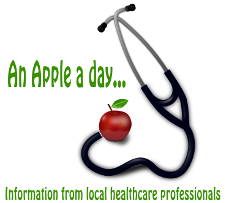By Elaine Burns
 You’ve all seen those ads on TV, you know the one with the lady who grabs the hot frying pan she just got out of a hot oven. The Ontario government, in an attempt to help us choose the appropriate type of help, gives us several options. Unfortunately, many of those options do not exist for us in Meaford.
You’ve all seen those ads on TV, you know the one with the lady who grabs the hot frying pan she just got out of a hot oven. The Ontario government, in an attempt to help us choose the appropriate type of help, gives us several options. Unfortunately, many of those options do not exist for us in Meaford.
We do not have a walk-in clinic, we do not have an Urgent Care clinic, nor a Nurse Practitioner clinic. This leaves us with two options, contact your family doctor or go to the Emergency Department (ED).
Thus starts the ever popular question: “When do I go to ED?”
It is very difficult to give a precise list of ‘must goes’. For example, a chronic migraine sufferer may not need to come to ED for a severe headache but someone with a new onset severe headache may need to. Someone with chronic breathing problems may be able to make an appointment with their physician about shortness of breath while someone who suffered a sudden severe onset should seek attention.
A suggested list could include but not be limited to:
-
a listless child, particularly an infant, and may have other symptoms such as vomiting, diarrhea, fever. Your child looks ill.
-
pain in the chest, arm, jaw or throat, sometimes felt as an overwhelming feeling of exhaustion
-
shortness of breath, new occurrence, or increasing difficulty breathing
-
a fall, with loss of physical ability, particularly in the elderly
-
sudden one-sided body weakness with or without facial drooping, or speech impairment
-
a new and sudden severe headache particularly with a change in vision
-
sudden or new paleness accompanied by excessive sweating
-
sudden or severe abdominal pain, not relieved by pain medication.
-
painful urination or bleeding when emptying bladder; this can be particularly troublesome in the elderly as bladder infections can lead to dementia
-
significant changes in mental state, either deterioration of a known mental health condition or a decrease in mental awareness
-
any period of unconsciousness
-
new or increased number of seizures
-
cuts requiring stitches: these should happen within 6 hours of the cut.
For all of these situations you should go to the ED, and in many cases it is advisable to call 911 rather than drive yourself. The most notable reason is that our ambulance paramedics are able to treat many conditions in the field and therefore start treatment early. If driving may cause potential injury to yourself or others call 911.
For symptoms like fever, nausea, vomiting, diarrhea, or mild headache you should try to treat before you decide to go to ED. For example, many parents do not give a fevered child some anti-fever medication because they want the ED to see the fever. ED staff will believe you and your child will thank you for making them comfortable. The same is true of headaches: try a pain reliever and see if it gets better. If the treatment works you may be able to follow up with your family practitioner.
The other option is to make an appointment with your family doctor. Some of the physicians in Meaford offer later appointments. However, as most of them also work in the ER, there may be times when they need you to come to the ER to see them or one of their team. This may be needed for evening or weekend situations.
If you are undecided if an ED visit is appropriate, an excellent resource is Telehealth, which is an Ontario government sponsored help line. You will speak directly to a registered nurse. They can be reached at:
1 866 797 0000 or for TTY 1 866 797 0007.
I hope this helps a little. I know that every ED professional would close by saying, “If in doubt go to ED!” They would rather you came when it was not needed than to stay at home when it was most definitely needed.
Do you have a question for our professionals? Please send questions to: elaine@themeafordindependent.ca.
Questions should be of a general nature as healthcare professionals cannot give specific direction without establishing a therapeutic relationship with a client. As an example you could ask a specific question about, say, diabetes, rather than a specific question about your diabetic control.











